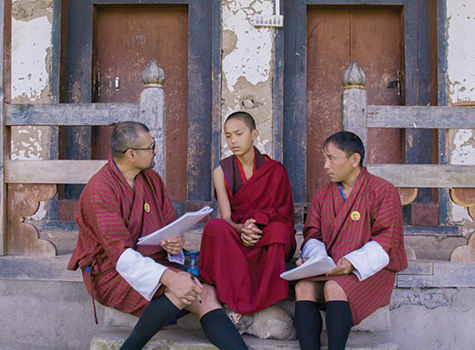
One of the most enduring images of South India is that of the Bharatha Natyam dancer and this ageless, evergreen dance form continues to hold people in thrall today. I always say, these classical dances are not merely an entertainment. India’s classical dances are steeped in history and mythology and are immersed in teaching philosophies and ethics.
When presented in its purity, Bharatha Natyam is one of the most subtle, sophisticated, and graceful dance forms in the world. This South Indian dance style is immensely popular in India and in many parts of the world. Many parents want their children to learn this dance form either to fulfil their own childhood dreams or because they hope their children will learn about the epics and the rich Indian culture through dance. Due to the amazing survival of this evergreen dance form, irrespective of the changes in repertoire and modes of presentation from time to time and from region to region, the basic principles and techniques of the art remained the same to the present day.
This dance form was developed with such precision that each part of the dance was well thought out. It starts from characteristics needed to become a classical dancer, followed by the setup of the stage, costume design, jewelry, and makeup, just to mention a few. It is a holistic approach to benefit your body, mind and soul. I have been giving several presentations on health benefits of these dances, especially when we age these benefits stay with us. Let us explore some basics of this dance form. Let us start with the source of this name. The word “Bharatha” is believed to be composed of the first syllable of its three main elements:
BHA for Bhava – meaning mood/expressions
RA for Raga – meaning melody/tune/song
THA for Thala – meaning rhythmic timing/beat
NATYAM – meaning the combination of both dancing and acting.
It is also known that Sage Bharatha has written the great book Natya Sastra (The treatise on dramaturgy), describing all aspects of dance. This book includes the basic techniques called Adavus; position of the feet and body; single and double hand gestures called Asamyuktha and Samyuktha hasthas; Shiro Bhedas-or head movements; Drishti Bhedas or eye movements; Bhru Bhedas or eyebow movements; Griva Bhedas or neck movements; Nava rasaa or nine emotions and so on.
Temple sculptures became the scriptures. Great temple builders, the Cholas, who ruled India between the 9th and 13th centuries, left a wealth of material on dance carved as inscriptions and sculptures on temples. Dance poses abound in the grand temples like the Brihadeshwara temple at Tanjavur, Gangasikonda Choli swaram temple at Gangaikonda Cholapuram, the Iravateswara temple at Darasuram, the Kampahareswara temple at Tribhuvanam, the cluster of temples at Kanchipuram and Kumbhakonam, Meenakshi temple at Madurai are some of the examples. The grand master of all temple architectures for this dance style is my favorite Nataraja temple at Chidambaram, in Tamil Nadu. All 108 dance Karanas or poses are engraved in the temple’s grand entrance doors. These carvings have been preserving the history of dances for ages.
The preservation continued through Guru Shishya Parampara. Even in the age of technology, a complicated dance form like this cannot be learned without the careful guidance of a guru. All established dancers themselves will say it starts with the great Gurus being treasure troves of knowledge, not just book learned or theoretical. They had the heritage of a practical methodology and wisdom, instilled with the ability to be intuitive in their teachings. They were deeply connected with the inner beings of their disciples, as they taught more than dancing. They helped us to recognize our inner and outer selves. They taught their students as much by what they said as by what they did not say and allowed us to nurture and develop our own epistemologies. It is this harmonious blend of relationship between guru and the disciple that renders the transcendent experience in dancing.
As these Gurus established themselves in different parts of India during different historic time periods, several major styles within Bharatha Natyam have been developed. Some of them are Melattur Style; Pandanallur Style; Vazhuvoor Style and Kalakshetra Style which is the most popular of all styles.
These gurus followed Natya Sastra in which Margam or a path to these dances were developed. A general format was established using a sequence of progressively hard dances to complete an Arangetram or Ranga Pravesham, or as we call it here a “Dance Graduation”.
This repertoire starts with Kauthvam or Alarippu and continues with Jathiswaram, Shabdam, Padam, Keerthanam, Varnam and ends with Thillana. These dances are set to the harmonious blend of south Indian Carnatic music compositions and the themes span the entire gamut of human emotions.
Due to this comprehensive and holistic approach, Bharatha Natyam dance style still is cherished, appreciated and treasured by many across the world. Many years of practice, grace, speed, versatility and complete mastery of the art are necessary to do full justice to a dance form such as this. Other dances may come and go, but Bharatha Natyam and other classical dances will continue to be evergreen and withstand the test of time.
———-
For questions or comments contact Maha via e-mail at: [email protected]
Posted: Monday, January 3, 2022



